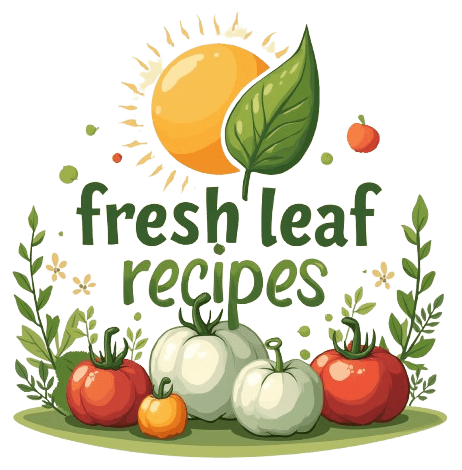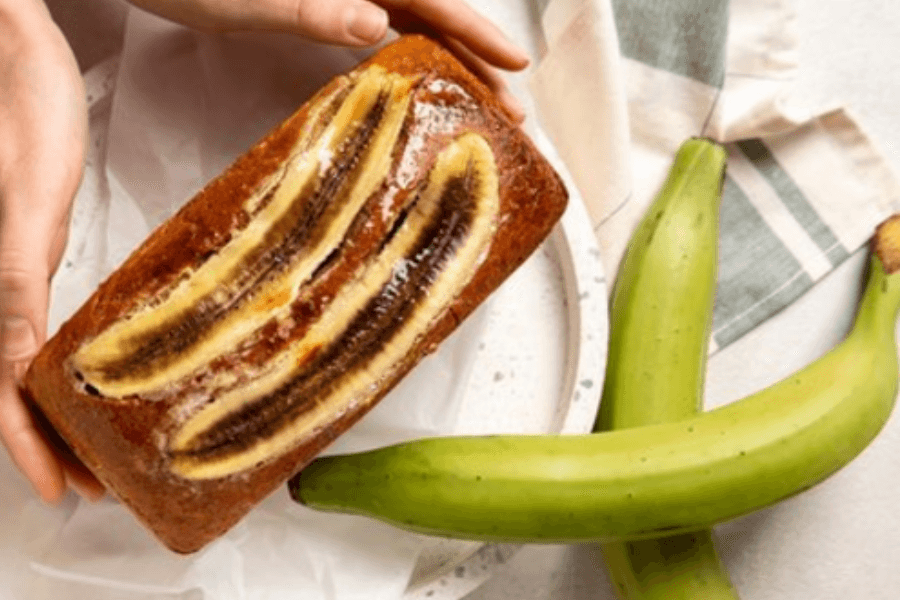Ah, banana bread! It’s more than just a comfort food; it’s a way to turn overripe bananas into something magical. Whether you’re a seasoned baker or a total newbie, mastering the art of banana bread can elevate your kitchen game. But here’s the deal – the secret to perfect banana bread isn’t just in how you bake it. It all starts with the ingredients you choose.
In this guide, we’re diving deep into every element that makes banana bread moist, flavorful, and irresistible. Ready to bake like a pro? Let’s jump in!
Key Ingredients for Perfect Banana Bread
Great banana bread begins with understanding its essential ingredients. Each one plays a unique role in creating the ultimate loaf. Let’s break it down:
The Role of Overripe Bananas: A Must-Have Ingredient
The star of the show is, of course, bananas. But not just any bananas – overripe bananas with brown spots are your go-to. Why?
“The riper the banana, the sweeter and more flavorful your bread will be.”
As bananas ripen, their starches convert to sugar, adding natural sweetness. Mash them thoroughly for a smooth texture, or leave some chunks if you like a rustic bite.
Table of Contents
Choosing the Right Flour: All-Purpose vs. Alternatives
Flour forms the base of your batter. All-purpose flour is a classic choice because of its versatility. But if you’re looking for something different, try these:
- Whole wheat flour: Adds a nutty flavor and extra fiber.
- Gluten-free blends: Great for those with dietary restrictions.
- Almond or coconut flour: For a moist, slightly denser loaf.
Pro Tip: Always sift your flour to avoid clumps and ensure even mixing.
Sweeteners: Granulated Sugar, Brown Sugar, and Alternatives
While bananas add sweetness, most recipes call for additional sugar. Your choice here impacts the flavor profile:
- Granulated sugar: Gives a light sweetness.
- Brown sugar: Adds a caramel-like depth.
- Honey or maple syrup: A healthier, natural option.
Want to reduce sugar? No problem – just rely more on those overripe bananas.
The Secret of Butter vs. Oil for Moisture
Every baker has a preference when it comes to fat:
- Butter: Creates a rich, creamy flavor. Ideal for traditionalists.
- Oil: Keeps your bread ultra-moist and extends its shelf life.
Some recipes even combine the two for the best of both worlds!
Enhancing Flavor with Spices and Extracts
What makes banana bread extraordinary? Flavor enhancers like:
- Vanilla extract: A classic choice for warm sweetness.
- Cinnamon and nutmeg: For a cozy, spiced loaf.
- Cardamom or ginger: If you want a bold twist.

Optional Add-Ins for the Ultimate Banana Bread
While traditional banana bread is fantastic, adding extras can make it unforgettable. Here are some ideas:
Nuts for Crunch: Walnuts and Pecans
Chopped walnuts or pecans are a popular addition. They bring a satisfying crunch and pair beautifully with the softness of the bread.
Chocolate Chips: A Sweet Surprise
Chocolate lovers, this one’s for you! Fold in semi-sweet or dark chocolate chips for a dessert-like treat.
Fresh or Dried Fruits for a Unique Twist
If you’re feeling adventurous, try adding:
- Blueberries or raspberries: For a fruity punch.
- Dried cranberries or apricots: Chewy and tangy additions.
The Science Behind Baking Banana Bread
Baking is both an art and a science. Understanding how ingredients work together ensures consistently perfect results.
Why Proper Leavening Agents Matter: Baking Soda vs. Baking Powder
Banana bread typically uses baking soda because it reacts with the acidity in bananas and other ingredients to create a tender crumb. If your recipe calls for baking powder, it’s to give an additional rise.
Pro Tip: Measure carefully! Too much leavening can cause your bread to collapse.
The Importance of Ingredient Ratios
Ever wonder why some loaves are dense while others are light and airy? It’s all about ratios:
- Too much flour = dry bread.
- Too little liquid = tough texture.
Always stick to the recipe for the best outcome.
Block Quote: “Baking banana bread is like a dance – every ingredient has a role, and balance is key to perfection.”
Common Mistakes and How to Avoid Them
Let’s face it – we’ve all had banana bread disasters. Here’s how to avoid common pitfalls:
Overmixing the Batter: What Goes Wrong?
When you mix too much, gluten develops, leading to tough, chewy bread. The solution? Mix just until the ingredients are combined.
Baking Time and Temperature: Getting It Just Right
Banana bread requires patience. Bake at 350°F (175°C) and avoid opening the oven too often.
Tip: Insert a toothpick in the center to test doneness. If it comes out clean, it’s ready!
Step-by-Step Guide to Baking Banana Bread
Now that we’ve covered the essentials, let’s dive into the actual process of making banana bread. Whether you’re a beginner or a seasoned baker, these steps will ensure your loaf turns out perfect every time. Ready to roll up your sleeves? Let’s do it!
Preparing Your Workspace and Tools
Before you start mixing, set yourself up for success. Here’s how:
- Gather Ingredients: Measure out everything beforehand. This includes your overripe bananas, flour, sugar, eggs, butter or oil, and any optional add-ins like nuts or chocolate chips.
- Prepare Your Baking Pan: Grease a loaf pan with butter or non-stick spray. You can also line it with parchment paper for easy removal.
- Preheat the Oven: Set your oven to 350°F (175°C). A consistent temperature is key for even baking.
Pro Tip: Use a kitchen scale for precise measurements – baking is all about accuracy.
Mixing the Ingredients for the Best Texture
Now it’s time to make magic happen:
1. Mash the Bananas
In a large bowl, mash your bananas using a fork or potato masher. Aim for a creamy consistency with a few small chunks for texture.
2. Cream the Butter and Sugar
If you’re using butter, beat it with the sugar until light and fluffy. This step incorporates air into the batter, giving your bread a tender crumb. Using oil? Skip this step and mix it directly with the mashed bananas.
3. Add Wet Ingredients
Stir in the eggs, vanilla extract, and any liquid sweeteners like honey or maple syrup. Whisk until smooth.
4. Combine Dry Ingredients
In a separate bowl, whisk together flour, baking soda, salt, and spices like cinnamon or nutmeg. This step ensures the leavening agents are evenly distributed.
5. Mix It All Together
Gradually fold the dry ingredients into the wet mixture. Be gentle – overmixing can result in dense bread.
Block Quote: “Stirring banana bread batter should feel like a hug – gentle, loving, and just enough to bring everything together.”
Baking and Testing for Doneness

Pour the batter into your prepared loaf pan, spreading it out evenly. Add toppings like sliced bananas or a sprinkle of sugar for a professional touch. Bake for 50-60 minutes, but start checking around the 45-minute mark.
- Toothpick Test: Insert a toothpick into the center. If it comes out clean or with a few moist crumbs, your bread is ready.
- Top Tip: If the top browns too quickly, cover it loosely with aluminum foil.
Storing and Serving Banana Bread
Once your banana bread is out of the oven, the aroma will be irresistible. But hold on – cooling it properly is crucial.
Proper Storage for Maximum Freshness
- Let the bread cool in the pan for 10 minutes before transferring it to a wire rack.
- Store at room temperature in an airtight container for up to 3 days.
- For longer storage, wrap slices individually in plastic wrap and freeze. They’ll keep for up to 3 months.
Quick Tip: Reheat frozen slices in the microwave for 20-30 seconds for that fresh-out-of-the-oven taste.
Creative Serving Ideas for Every Occasion
Banana bread is incredibly versatile. Here are some fun ways to enjoy it:
- Breakfast: Toast a slice and spread with butter or cream cheese.
- Dessert: Top with a scoop of vanilla ice cream and a drizzle of caramel sauce.
- Snack: Pair with coffee or tea for a cozy afternoon treat.
FAQs About Baking Banana Bread
Let’s address some common questions so you can troubleshoot like a pro:
Can You Use Frozen Bananas?
Absolutely! Thawed frozen bananas are even sweeter and more flavorful. Just be sure to drain any excess liquid before using them in your batter.
What If My Bread Turns Out Too Dry or Too Dense?
Dry bread can result from too much flour or overbaking. Dense bread often means the batter was overmixed or lacked enough leavening. Stick to the recipe and measure carefully.
For more easy and delicious recipe, check out this: What Treat Is Gluten and Dairy-Free? Delicious Options to Try!
Final Thoughts
Making banana bread isn’t just about following a recipe – it’s about experimenting, learning, and putting a little bit of love into every loaf. Whether you stick to the basics or add your own twist, you’re now equipped to bake like a pro!
Overripe bananas often create the richest Banana Loaf. If you’re unsure, explore our article on why Chiquita Banana Bread Mix is a must-have for convenience without sacrificing flavor.
For inspiration, check out our comprehensive guide to making the perfect banana bread.
Conclusion: Your Journey to Banana Bread Mastery
Congratulations! You’ve unlocked the secrets to baking banana bread like a pro. From choosing the ripest bananas to perfecting the balance of flavors and textures, you’re now armed with everything you need to create the ultimate loaf.
But remember, baking is as much about creativity as it is about precision. Feel free to experiment with flavors, mix-ins, and techniques to make the recipe your own. Whether you enjoy your Banana loaf fresh out of the oven or toasted with a slather of butter, there’s no wrong way to indulge in this classic treat.
Bonus Tips for Banana Bread Perfection
Turn It Into Muffins: Pour the batter into a muffin tin and bake at 375°F (190°C) for about 20 minutes for grab-and-go treats.
Don’t Rush the Cooling Process: Letting your bread cool completely enhances its flavor and makes slicing easier.
Make It Healthier: Substitute half the flour with whole wheat, swap sugar for honey, or use yogurt instead of butter.
For more easy and delicious recipe, check out this: What to Eat on a Gluten and Dairy-Free Diet: Your Ultimate Guide

